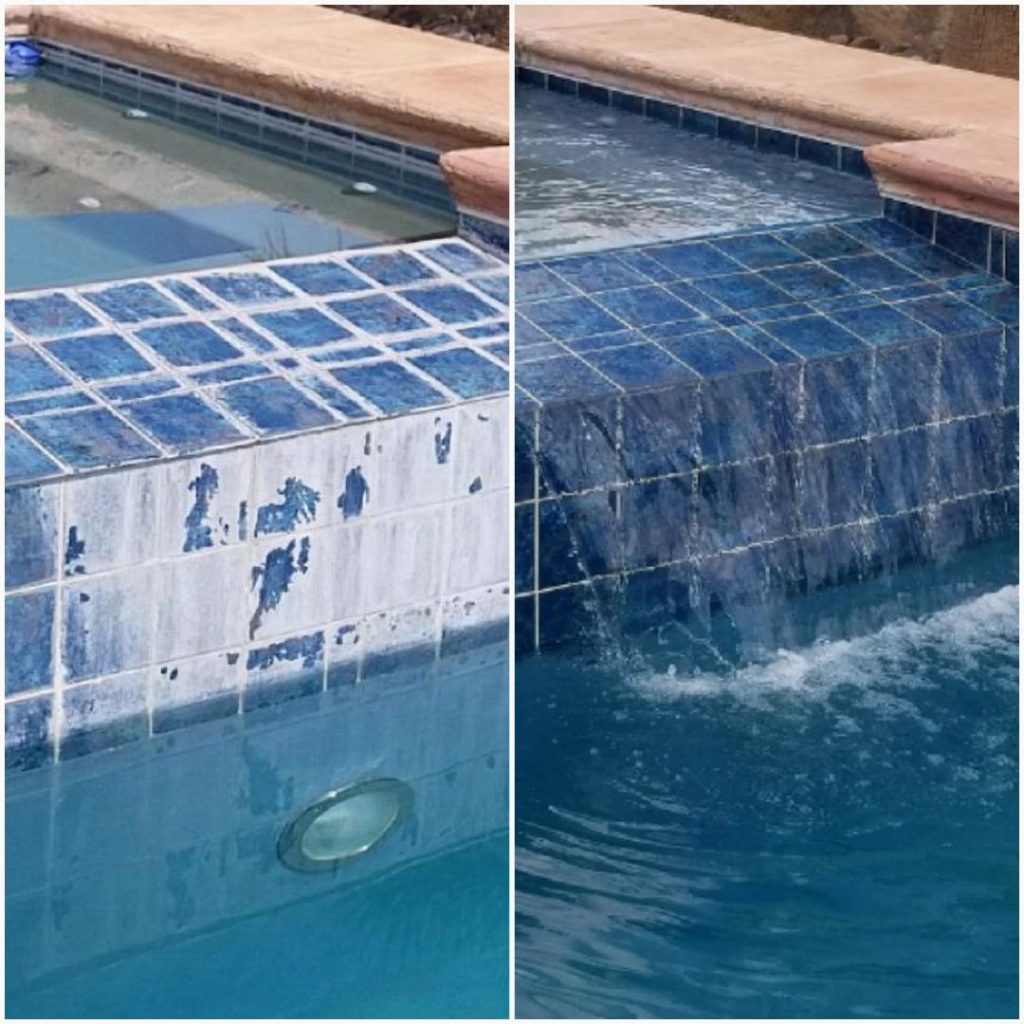Calcium build-up – it’s an off-putting growth of white material that takes away the aesthetic. For those new pool owners, you may not have seen this happen just yet. However, for those who have had a pool for a few years or more knows that calcium build-up can look bad. This calcium build-up can mean a lot of things, both good and bad. Too much calcium (or calcium carbonate if you really want to get specific) can do its share of damage. Also, too little calcium will also mess with your pool in various ways. So, how do you know what’s too little or too much? Well, let’s learn a little more about calcium and its effects.
What is Alkalinity?
So, we brought this up earlier, but what exactly is alkalinity? First, know that total alkalinity differs from alkaline, which is basic on the pH scale. Total alkalinity, on the other hand, stands separate from pH. It’s a measure of the number of alkaline substances in the pool water.
When total alkalinity becomes low, it can make the water aggressive and cause insane fluctuations in the pH. When it’s high, it will create cloudy water, lime precipitation and make it difficult to adjust the pH level. If you keep an eye on your daily “shock” chlorination, then total alkalinity will balance out. You can reduce your total alkalinity with sodium bisulfate and increase it with sodium bicarbonate. You want to test your total alkalinity at least once a week to keep up with the chemical changes in your water.
Isn’t Hardness Bad For Your Pool?
You may know about “hard” water, which contains trace amounts of calcium. Hardness in your water basically means it contains lime that has dissolved in the water. When the water has a calcium hardness of less than 100 ppm, then it’s labeled as soft water. Soft water will draw out the lime in tile grouting along with the concrete of cast pools. This process can also lead to disintegration.
Pool Chemicals
You probably use a few chemicals inside of your pool. Most likely, pH and chlorine, unless you use some other chemical agent. At times, calcium hardness can fall off the chemical list we watch out for when doing chemical checks. With a proper pool maintenance routine, you can easily keep things like calcium in check and not worry about the flakes, stains, and leaks that can occur from it.
Balance really is everything when it comes to chemicals in your pool. If your pH level is off-kilter or the alkalinity levels turn too high or too low, then you’ll begin to see algae, a cloudy appearance in the water, or calcium deposits. The temperature of the water can also contribute to this as well. Calcium becomes more soluble in cold water, which explains why scaling of heater equipment is common with pool owners.
When balancing your pool water, remember that too much calcium can cause cloudy water and scale. Low levels of calcium can turn into something devastating for your pool. So, your pool water will naturally try to stay balanced. When there isn’t enough calcium, then the water will draw calcium out of the vinyl, fiberglass, or even metal fittings and heat exchangers. This can cause all sorts of problems, from corrosion to pool leaks and stains.
Your pool should maintain a calcium content between 100-400 parts per million (PPM). PPM is a unit of measurement of a certain substance like a chemical or mineral. You can raise the hardness by getting a hardness increase at your local pool store. Or, if you’re trying to lower the hardness, then you can add a sequestering agent. That agent will help fight off the effects of high metal and calcium, which also helps prevent stains.
Texas Enviroblast Calcium Treatment
Your pool chemicals take time to learn. It does involve some trial and error, but the good news is that you can probably fix the issue no matter what. It may take some time and patience but learn early, so the rest of your pool years get spent having fun. At times, depending on where you live and the climate, the calcium build-up is inevitable. However, there’s always a way to fix these problems.
Our environmentally friendly methods have served El Paso and the Southwest region creating over 40 years of combined experience. Our pool cleaning and calcium removal services will make your pool look better than the day you got it. We don’t use any harmful chemicals in our process either. We help all commercial and residential customers, so give us a call to restart your pool aesthetic today!
